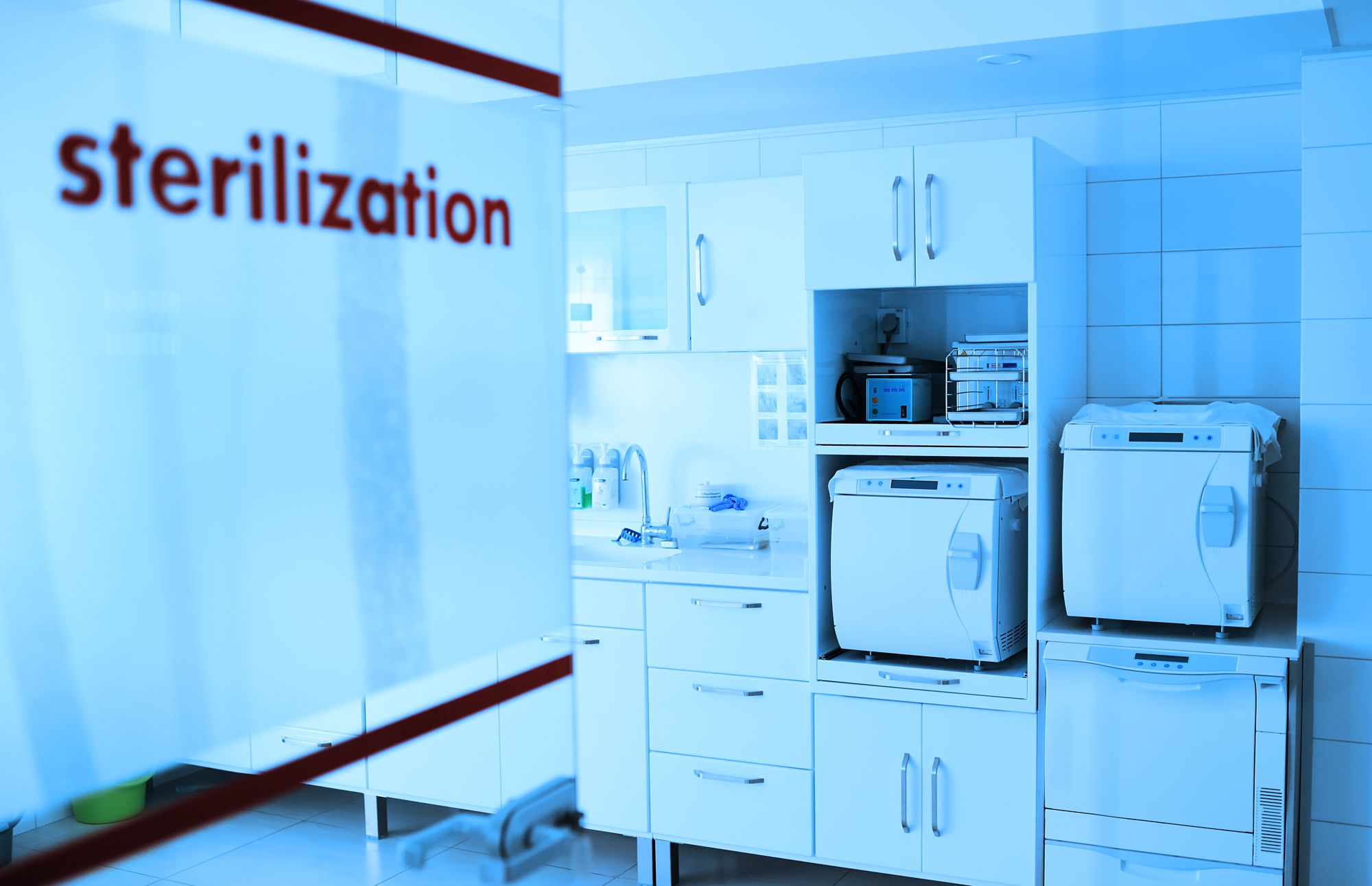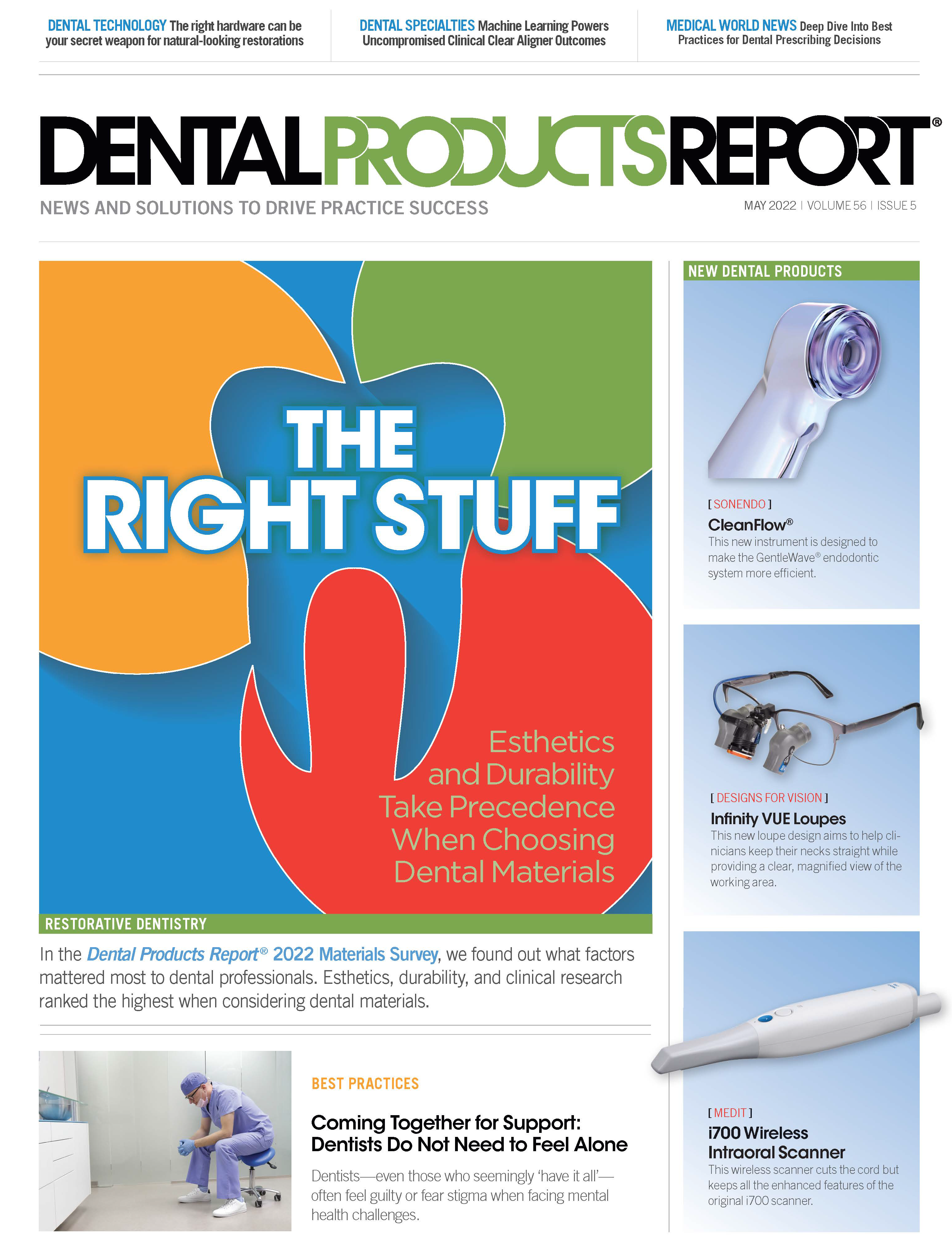Enhancing Efficiency in the Sterilization Center of Your Dental Practice
A look at some the of compliant and safe ways to make the sterilization center of the dental practice more efficient to use.
Enhancing Efficiency in the Sterilization Center of Your Dental Practice. Photo courtesy of Evgeniy Kalinovskiy/stock.adobe.com.

One may think that for infection control practices to be effective, the steps taken must be fastidious and dogmatic. And while it is true that the infection control tasks can’t be performed just any old way, safety and efficiency are not mutually exclusive.
With the help of infection prevention consultants and podcasters The Compliance Divas, we look at sources of enhancing efficiency throughout the dental practice, particularly in the sterilization area. Part 2 examines efficiencies in the treatment room.
The Compliance Divas (thecompliancedivas.com) are a group of consultants with a weekly podcast covering current topics such as infection prevention and control, OSHA, and HIPAA compliance for dentistry. They discuss the latest regulatory information, answer frequently asked questions, and give suggestions for dental practices to make compliance easy and sustainable.
The Most Common Inefficiencies
While every practice has its own workflows and sources of potential inefficiencies, there are some common issues that seem universal.
“One of the problems that we’ve identified is when there’s not enough time allocated for the patient procedures,” Olivia Wann, JD, the founder of Modern Practice Solutions, says. “It causes bottlenecking both in the treatment room with the next patient waiting, as well as in the sterilization area where the instruments are getting piled up because the clinical people are getting behind. This is an area that we encourage people to time the procedures, to make sure that they are allowing adequate time, not just for the treatment room, but to include the time necessary for the assistant or dental hygienist to carry out procedures in the sterilization area.”
“Another piece of that is lack of standardization when they get to the sterilization center,” Linda Harvey, RDH, MS, LHRM, DFASHRM, adds. Harvey is the president and founder of The Linda Harvey Group. “Everybody's doing something different. Team members get in a rush, so maintaining a routine that follows the proper protocols quickly disintegrate into piling instruments in the sink, overloading the ultrasonic device, and things like that.”
Training
Ensuring that everyone performs their tasks efficiently and consistently is key. That starts when a team member is welcomed to the practice.
“When onboarding a new clinical employee, regardless of the years of training that they have had as a dental assistant and or hygienist, it’s very important to conduct training, particularly in the sterilization area, because how they process instruments in a different practice may not align with the dental office that they’re currently serving in compliance with the CDC’s recommendations and also following OSHA regulations,” Wann says. “What we’ve identified is where they’re not packaging instruments correctly. They’re overfolding the autoclave pouches. They’re grouping too many instruments into the pouch, which is inefficient. There are multiple areas that we could address with proper training, and not just letting someone, out of the gate, into the sterilization area, because that is probably one of the most critical areas in a dental office for patient and employee safety.”
Unfortunately, some team members may have developed bad habits over the course of time in the effort to save time. Worse yet, those bad habits may get passed down to new team members. To protect from training inefficiencies, the practice should have all the relevant technical documentation on hand so everyone understands how the task should be accomplished.
“It’s important for each practice to be prepared to train new team,” Harvey observes. “One of things they can do in preparation is to have all manufacturer’s instructions for use for the various equipment in the practice assembled in one location. So that way, when it’s time to train the new team member how their autoclave, ultrasonic, instrument washer – and all the other devices in the sterilization center work – they have all the protocols to teach them.”
Training goes beyond the technical documentation for given devices, of course. Wann recommends every practice have a copy of The Organization for Safety, Asepsis and Prevention’s (OSAP) book “From Policy to Practice”.
“It is a step-by-step guide that is invaluable,” Wann says. “I call it the ‘Infection Control Bible’, and I feel that every practice should have a copy, because it sets the playing field correctly, rather than someone saying, ‘Well, this is how I did it in Dr So-and-so’s office’. Let’s do it the correct way. As Linda mentioned, standardization is key, just like having teenagers working at McDonald’s and still producing the same quality food. We need to have standardization in our practices. And that could come in a variety of forms, just even having the new person shadow your best team member – not your weakest, not the one that’s leaving, that they’re going to take on bad habits that they have, but you take the time of your best superstar dental assistants or hygienists and let them train them. And oftentimes with a staffing shortage, we don’t have time to do that and then end up suffering in the long term.”
“In other words, a new team member is brought into the practice to learn the ropes as they go along, based on the fact that they have some experience in their prior office,” Harvey adds. “Another area that is concerning is the fact that sometimes offices are hiring individuals with no dental experience. And they find individuals who are sharp, willing to learn and have a good attitude and work ethic, and they are assigned to sterilization. That’s really the heart and soul of the practice. If things aren’t working well there, then you have an unsafe environment for the patients and team members alike. So, proper training for new team members is imperative. It’s much more than showing them how to fold a sterilization pouch and how to turn the dials on the autoclave. They have to know why they’re doing what they’re doing. And so having manufacturer’s instructions for use, having the manual, and then initiating some infection control training for that individual is important.”
Equipment Considerations
One of the unique features of the sterilization center is the specialized equipment necessary to keep instruments clean and safe. As such, team members must be able to maintain that equipment efficiently and safely.
“It’s important that we have the procedures, whether it’s standard operating procedures, or as Linda mentioned, having the instructions for use, or a software program for quality control purposes, or just simple spreadsheets, we should be maintaining the equipment properly, such as changing out gaskets, or cleaning chambers, or properly cleaning the ultrasonic testing units, all the different tasks that take place need to be documented so that the there are no shortcomings,” Wann says. “And 1 way to make that easier, so that everybody can do it, is to create short videos on your smartphone of the correct process. And then employees can refer to those videos time and time again, rather than just reading this daunting 3-ring binders full of standard operating procedures that no one ever has the time to look at. I remember, years ago, looking at an ultrasonic during an inspection and there was mold growing on the inside of the lid. And when I asked, ‘When was the last time that it was cleaned, not just filled?’, no one had an explanation. We had to print the instructions for use and make sure that they were familiar on how to maintain the equipment properly.”
One of the most overlooked pieces of equipment in the sterilization area is the sterilization area, itself. If possible, improving that room can go along way toward enhancing efficiency.
“When dentists are designing a new office or remodel, I encourage them to please make the sterilization area larger, because it’s very difficult to be efficient when you’re basically working in a small closet,” Wann says. “I encourage them to think of the sterilization area as your kitchen. It needs to be spacious enough to accommodate the numerous dental assistants and hygienists that are running in and out of that sterilization area, and be designed to correspond with CDC’s guidance as well as OSHA regulations.”
Get Out of Your Own Way
To try and expedite infection control tasks in a busy practice’s sterilization center, team members may be unknowingly making things less safe.
“When the door pops open a little bit for the dry cycle on some of the sterilizer units, many times the team members don’t realize that the cycle is not complete,” Harvey says. “Somehow they think, ‘Oh, the door’s popped open. I can take out the instruments let them air dry and get the next cycle started so I can catch up’, because not enough time has been allotted, they’re running behind, or squeezing in emergency patients. They’re trying to be efficient, but they are really following improper protocols. Those instruments are not considered sterile if they are allowed to air dry.”
Other times, team members are adding unnecessarily complicated steps to already standard practice.
“I’ve seen some errors where they had a patient that had a medical history indicating that the patient had, for example, hepatitis or another type of infection, and they were taking extra steps, such as putting the instruments in what we call cold sterile solution – the high level disinfectant – first, and then rinsing and putting them into an ultrasonic,” Wann says. “They’re adding all these extra steps, which is not necessary. We want to follow the routine protocols and not make any interruptions or extra steps. I’ve also seen where they were spraying instruments with surface disinfectant. If you are behind and you want to avoid the debris to drying on the instruments, then use an enzymatic spray designed to start lifting the proteins from the instruments before it dries, which would be a correct procedure.”
“When a team member does something like that, similar to taking wet pouches out of the autoclave, they think they’re doing the right thing; the intention is to do something extra and be safer,” Harvey adds. “And in reality, they haven’t had the opportunity to receive training–or refresh themselves on the proper protocols. When we follow Standard Precautions, we treat all patients the same. We should not vary the protocols because a patient has a potentially contagious disease. If they recognize that, and stick to the known protocols, then they’re safe. It’s when team members start varying those protocols and adding extra steps, they end up spending more time performing sterilization processes and they lack standardization. In other words, they’re performing the incorrect steps.”
Transition
When instruments have been safely reprocessed, they need to be delivered to the treatment room. That operation involves its own steps that need to be performed the proper way.
“One of the things that we’ve identified when we’re on-site consulting is that some of the offices are not in compliance with OSHA’s Bloodborne Pathogens standard, in that the instruments should be transported in a transport container, not on an open tray,” Wann says. “Whether the practice chooses to use a tray system with a lid or a container, even if it’s a Tupperware container, OSHA doesn’t really define what type of container it needs to be, other than it needs to be leakproof and must have a biohazard symbol to communicate that the contents are contaminated. We often see that as a weak link going from the treatment room to the sterilization area. We encourage clients to understand that whether you’re traveling 10 or 20 feet from the treatment room to sterilization area, or you’re in a big dental school, going four floors down, we have to make that process very safe and efficient.”
Infection control efficiencies start in the sterilization area extend into the treatment room, which we will examine in Part 2.
